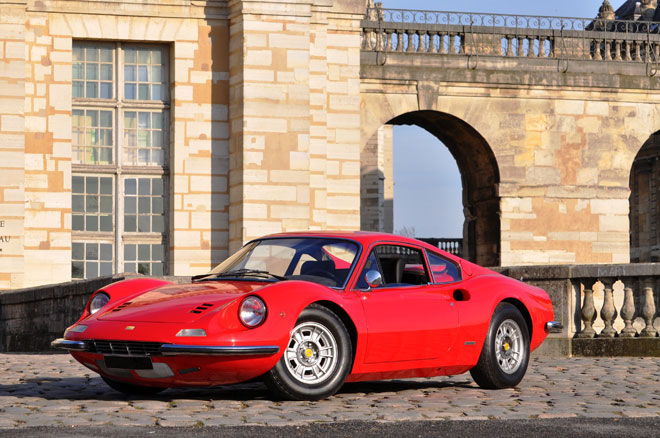Ferrari had resolved to create a younger brand using the support of Fiat, the innovative defining style of Pininfarina, and a new light alloy engine used in a rear mid-engine configuration. The resulting Dino was described by the Commendatore as “almost a Ferrari.” That slap denied it the name which posterity restored to it.
The Dino was born in late 1969 following a long gestation. It started with a study prototype designed by Pininfarina in 1965, followed be a second functional prototype in 1966, and then a production type 206 in 1967.
The 206 GT featured a 2-liter V6 engine. In 1969, a new engine with a cast case raised the displacement to 2.4 liter—and brought more torque and suppleness to the 246 GT. The car had a high degree of homogeneity on the road, a remarkable equilibrium and a dynamic behavior superior to that of the powerful GTs with the engine in the front.
The car presented is a Dino 246 with the performance of the engine revised by adopting a kit called “Stratos,” which was assembled in Italy and supervised by Franco Meiners. The kit featured pointed camshafts and larger Weber carburetors.
A Pozzi invoice folder shows that the car has been regularly serviced since 2004. In 2008 and 2009, it was the object of major repair work on the engine, clutch, gearbox, running gears and the brakes, by Pozzi, at a cost of more than 30,000 euros. The Dino body and upholstery was restored by ODS, a renowned specialist. The sum total of the work, detailed information about which is given in the ODS invoices, comes to more than 40,000 euros.
This car, which is red with a black interior, has been maintained meticulously and is accompanied by its invoice folder, a book detailing the restoration of the car, an expert report dated 2010, its normal French registration document and its toolkit.

